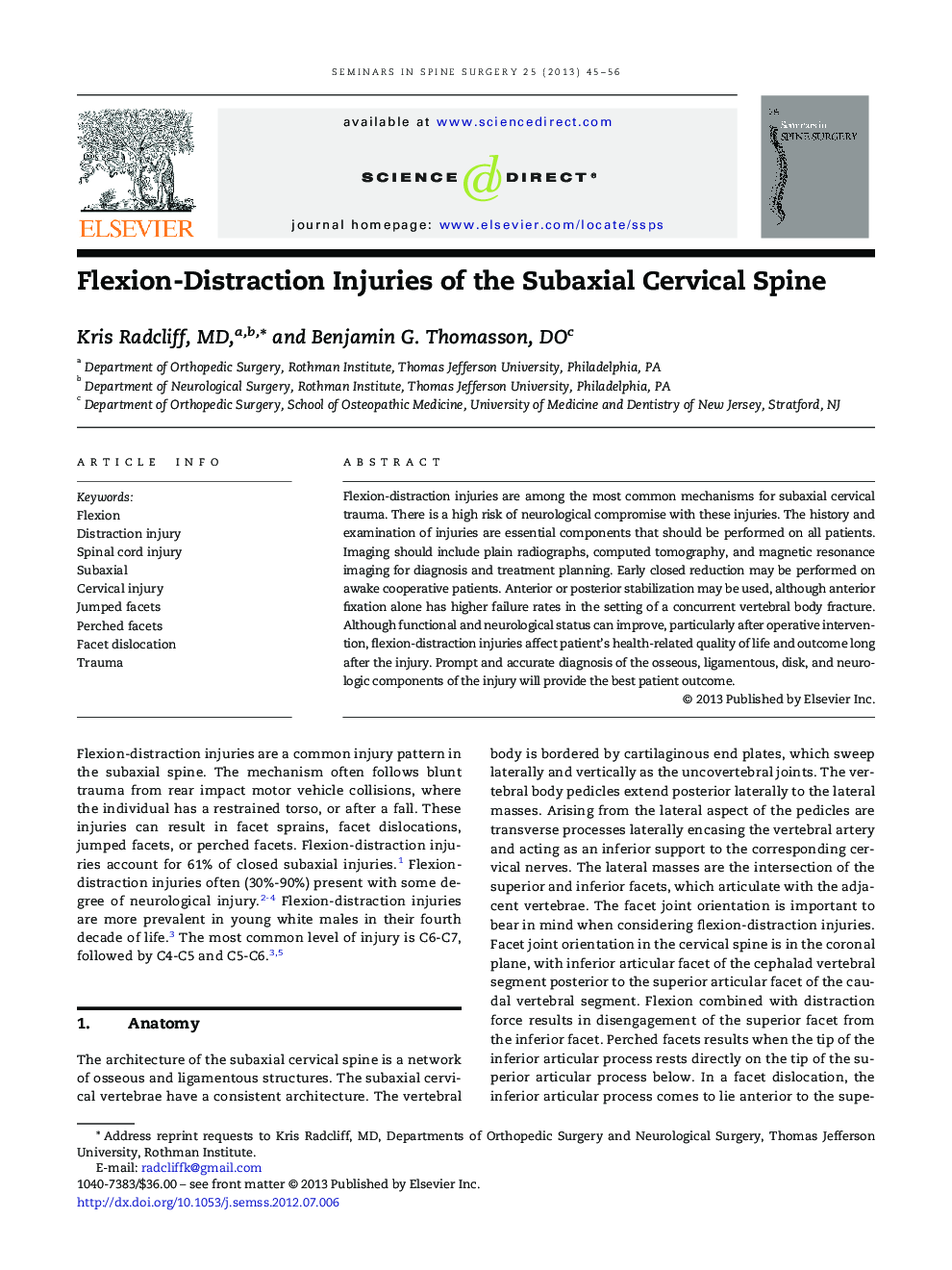| Article ID | Journal | Published Year | Pages | File Type |
|---|---|---|---|---|
| 4094789 | Seminars in Spine Surgery | 2013 | 12 Pages |
Flexion-distraction injuries are among the most common mechanisms for subaxial cervical trauma. There is a high risk of neurological compromise with these injuries. The history and examination of injuries are essential components that should be performed on all patients. Imaging should include plain radiographs, computed tomography, and magnetic resonance imaging for diagnosis and treatment planning. Early closed reduction may be performed on awake cooperative patients. Anterior or posterior stabilization may be used, although anterior fixation alone has higher failure rates in the setting of a concurrent vertebral body fracture. Although functional and neurological status can improve, particularly after operative intervention, flexion-distraction injuries affect patient's health-related quality of life and outcome long after the injury. Prompt and accurate diagnosis of the osseous, ligamentous, disk, and neurologic components of the injury will provide the best patient outcome.
